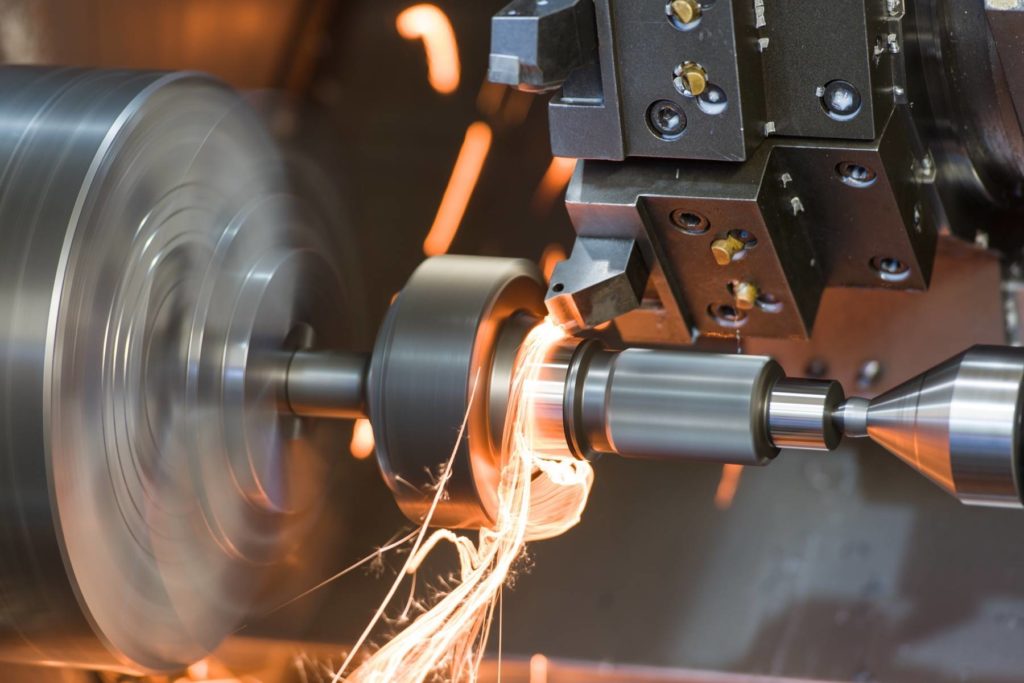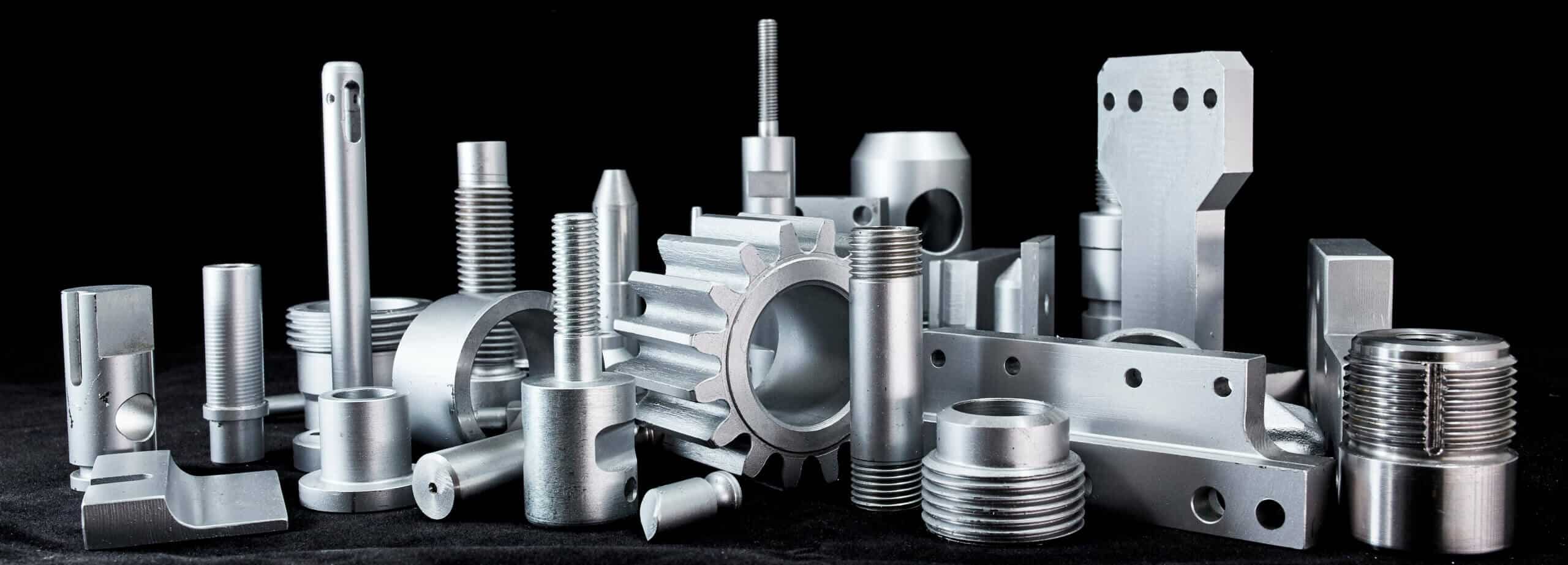Fasteners and Machining: Vital Parts for Precision Production
Fasteners and Machining: Vital Parts for Precision Production
Blog Article
Introducing the Ins And Outs of Fasteners and Machining Procedures for Optimal Efficiency
In the realm of design and manufacturing, the selection of bolts and the complexities of machining procedures play an essential role in figuring out the supreme efficiency and sturdiness of a product. From the relatively straightforward job of selecting the right sort of bolt to the complicated accuracy machining techniques used, every step in this procedure needs careful attention to information. As we start this exploration right into the world of fasteners and machining, we will certainly uncover the subtle yet critical aspects that can considerably influence the efficiency and high quality of the last product, clarifying the frequently ignored facets that can make all the difference in accomplishing optimum performance.

Relevance of Correct Bolt Choice
Selecting the ideal bolts is important in guaranteeing the structural honesty and durability of any type of mechanical assembly. Bolts play a basic function in holding parts with each other safely, with the right selection contributing significantly to the total performance and reliability of the setting up. When choosing bolts, elements such as product compatibility, environmental problems, load-bearing capability, and ease of installment have to be very carefully considered to assure optimal efficiency.
Improper bolt selection can cause a variety of problems, consisting of loosening, rust, and even structural failing. Using fasteners that are not matched to the particular needs of the assembly can jeopardize its capability and position safety and security dangers. Designers and designers have to meticulously assess the application requires and pick bolts that satisfy or surpass the required requirements and requirements.
Furthermore, the appropriate fastener choice procedure entails assessing the joint design, anticipated loads, vibration levels, and prospective thermal growth or tightening to make certain that the picked bolts can withstand the operating conditions effectively. By prioritizing appropriate bolt option, producers can boost the high quality, durability, and performance of their mechanical settings up.
Types and Characteristics of Fasteners
A vital element of mechanical assemblies depends on understanding the diverse types and unique characteristics of fasteners used in different industrial applications. Fasteners are essential components that hold frameworks with each other, making certain security and performance. There is a vast array of fasteners offered, each developed for specific objectives based upon the application demands. Common sorts of bolts include screws, bolts, nuts, rivets, pins, and washers.
Screws are threaded fasteners that are commonly made use of to join 2 or more parts together. Screws are similar to screws but are normally used with a nut to develop a protected joint. Nuts are inside threaded fasteners that mate with screws to hold components with each other. Washers are slim plates that disperse the tons of a bolt, protecting against damage to the product being attached. Rivets are irreversible fasteners that are hammered or pushed into location. Pins are made use of for positioning or to safeguard components web link briefly.
Comprehending the attributes of each kind of fastener is vital for choosing the appropriate one for a particular application, ensuring optimum efficiency and dependability of the mechanical assembly. Fasteners and Machining.
Precision Machining Strategies for Performance
The complex design needs of numerous fasteners necessitate utilizing accuracy machining strategies for optimal performance in manufacturing procedures. One of the main methods used in accuracy machining is Computer Numerical Control (CNC) machining, which makes it possible for high levels of precision and look here repeatability in the production of fasteners.
By using accuracy machining methods, makers can boost the top quality of bolts, decrease product waste, and boost total manufacturing performance. The usage of advanced machining processes assists make sure that fasteners fulfill sector standards and customer assumptions for efficiency and integrity.

Variables Influencing Machining Refine Efficiency
Numerous variables play a significant function in figuring out the efficiency of machining processes in the production of bolts. The first important factor is the choice of reducing devices. Selecting the suitable tools based upon the product being machined, desired surface, and reducing rates can greatly affect the effectiveness and top quality of the machining process. Additionally, the cutting specifications such as reducing speed, feed price, and depth of cut are necessary variables that affect efficiency. Fasteners and Machining. Optimizing these specifications based upon the certain needs of the bolt being produced is key to accomplishing specific and affordable machining.
Machine strength and stability also play an essential duty in identifying machining procedure efficiency. An educated operator can make real-time modifications, troubleshoot concerns effectively, and make certain that the machining procedure runs efficiently, eventually affecting the last top quality of the fastener.

High Quality Control Steps in Manufacturing
Aspects affecting machining procedure performance, such as reducing tool selection and machine security, directly influence the find more implementation of quality assurance steps in production. Quality assurance steps are important in ensuring that items fulfill the called for standards and requirements. In the manufacturing procedure, various strategies are employed to preserve top quality requirements. Inspection and screening play a vital function in determining any deviations from the preferred outcome. Regular upkeep of machining tools is also vital to support quality assurance. Calibration of equipments and devices is necessary to ensure exact and precise manufacturing processes. Furthermore, executing standardized operating treatments and protocols can aid in maintaining uniformity and quality throughout the assembly line. Quality control determines not only concentrate on completion product yet also on every phase of the manufacturing process to prevent flaws and errors. By adhering to rigid quality control procedures, makers can improve client complete satisfaction, construct a track record for integrity, and ultimately accomplish optimum performance in their machining processes.
Verdict
In conclusion, selecting the best fasteners and utilizing precision machining techniques are necessary for ideal efficiency in producing procedures. Comprehending the kinds and attributes of bolts, together with aspects influencing machining process efficiency, can lead to enhanced efficiency and quality assurance measures. By paying attention to these intricacies, suppliers can attain greater levels of performance and reliability in their items.
In the realm of engineering and production, the option of fasteners and the complexities of machining procedures play a pivotal role in establishing the best performance and sturdiness of a product (Fasteners and Machining). One of the key methods used in accuracy machining is Computer system Numerical Control (CNC) machining, which allows high degrees of accuracy and repeatability in the production of fasteners. The use of advanced machining processes aids make sure that bolts satisfy industry criteria and customer expectations for efficiency and dependability
In verdict, choosing the right fasteners and utilizing precision machining techniques are crucial for ideal performance in producing processes. Comprehending the types and features of bolts, along with factors affecting machining procedure performance, can lead to boosted efficiency and top quality control measures.
Report this page